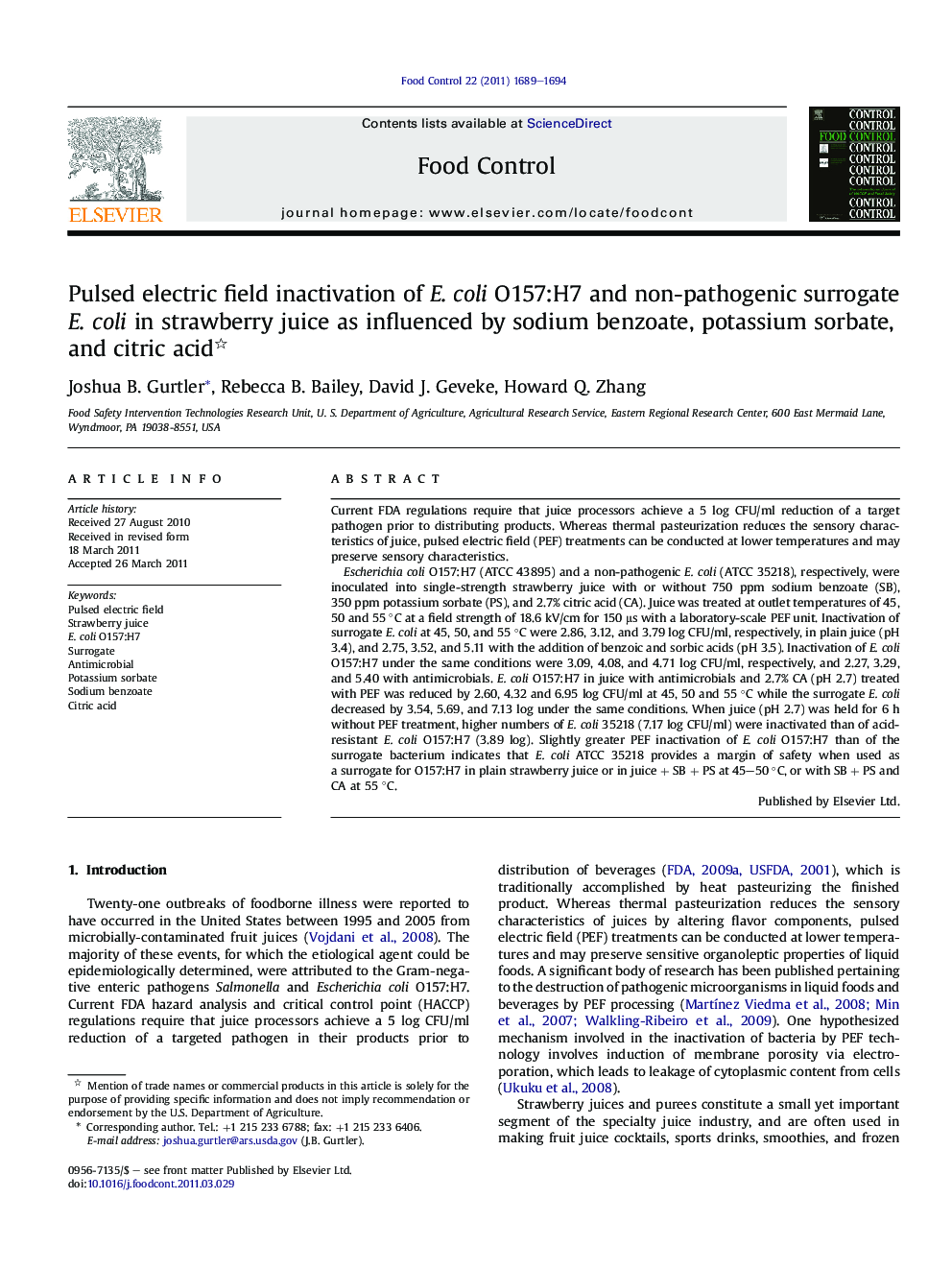| Article ID | Journal | Published Year | Pages | File Type |
|---|---|---|---|---|
| 6394422 | Food Control | 2011 | 6 Pages |
Current FDA regulations require that juice processors achieve a 5 log CFU/ml reduction of a target pathogen prior to distributing products. Whereas thermal pasteurization reduces the sensory characteristics of juice, pulsed electric field (PEF) treatments can be conducted at lower temperatures and may preserve sensory characteristics.Escherichia coli O157:H7 (ATCC 43895) and a non-pathogenic E. coli (ATCC 35218), respectively, were inoculated into single-strength strawberry juice with or without 750 ppm sodium benzoate (SB), 350 ppm potassium sorbate (PS), and 2.7% citric acid (CA). Juice was treated at outlet temperatures of 45, 50 and 55 °C at a field strength of 18.6 kV/cm for 150 μs with a laboratory-scale PEF unit. Inactivation of surrogate E. coli at 45, 50, and 55 °C were 2.86, 3.12, and 3.79 log CFU/ml, respectively, in plain juice (pH 3.4), and 2.75, 3.52, and 5.11 with the addition of benzoic and sorbic acids (pH 3.5). Inactivation of E. coli O157:H7 under the same conditions were 3.09, 4.08, and 4.71 log CFU/ml, respectively, and 2.27, 3.29, and 5.40 with antimicrobials. E. coli O157:H7 in juice with antimicrobials and 2.7% CA (pH 2.7) treated with PEF was reduced by 2.60, 4.32 and 6.95 log CFU/ml at 45, 50 and 55 °C while the surrogate E. coli decreased by 3.54, 5.69, and 7.13 log under the same conditions. When juice (pH 2.7) was held for 6 h without PEF treatment, higher numbers of E. coli 35218 (7.17 log CFU/ml) were inactivated than of acid-resistant E. coli O157:H7 (3.89 log). Slightly greater PEF inactivation of E. coli O157:H7 than of the surrogate bacterium indicates that E. coli ATCC 35218 provides a margin of safety when used as a surrogate for O157:H7 in plain strawberry juice or in juice + SB + PS at 45-50 °C, or with SB + PS and CA at 55 °C.
